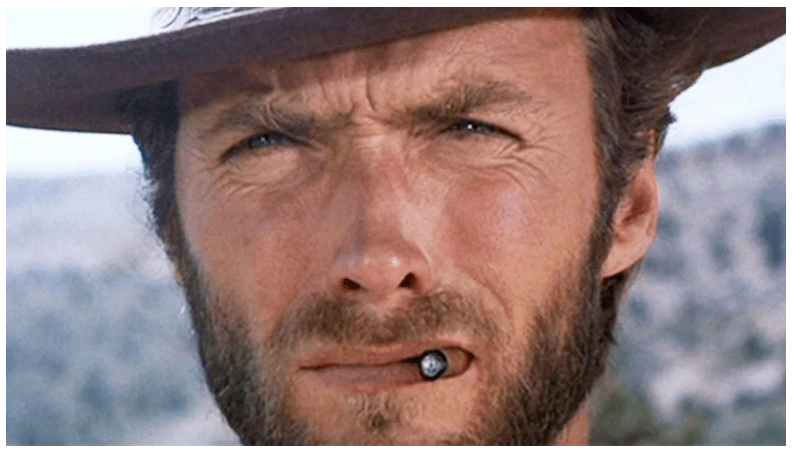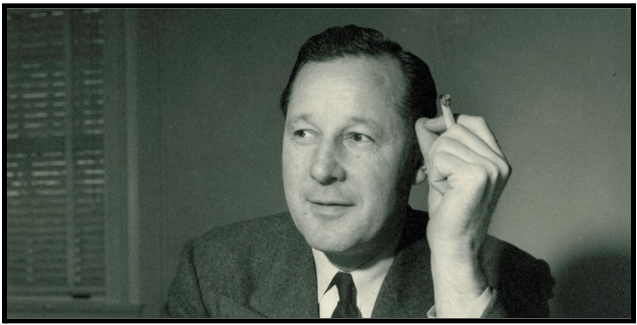Talking Big Ideas.
“He has eyes that pierce the body armor of a knight.”
~ Shakespeare describing Coriolanus
I was interviewing for a job at a research center.
This was well before the pandemic, almost a decade ago, so I was suited up and in person. Three senior staffers sat across the table from me. I wanted to be their new Director of Media Relations. Things were going well when I got this question:
Do you think you can make our economists speak effectively on TV?
“Yes I can,” I said, and explained that in my current job at a law firm our attorneys were regularly featured on TV. He pushed back: “I’m talking about economists. Do you know the difference between an introverted economist and an extroverted economist?”
I admitted that I did not.
“An introverted economist will talk to you while staring at his shoes. An extroverted economist will talk to you while staring at your shoes.”
He was joking, of course. But his point is important. Eye contact matters.
I worked with a nonprofit leader once who memorized his entire talk — and then delivered it to the ceiling. It was incredible. Every word, straight up in the air.
Bourke Cockran mentored many of last century’s most iconic speakers. Winston Churchill went so far as to say that Cockran had “the single greatest influence” on his life. Cockran’s first rule for effective speaking:
Never, never, never let words out of your mouth when your eyes are looking down.
Technically, the nonprofit leader obeyed Cockran’s rule – he wasn’t looking down! But Cockran’s point is clear. Eye contact is essential in establishing a connection among people.
Think about a time you were in a small group socializing. And for some reason no one made eye contact with you. Have you ever experienced this? How did it make you feel?
We evolved to be highly sensitive to eye contact. When we get denied, it can be painful. And when we receive it, we can feel connected and important.
Notice the way Kelly McGonigal begins her viral talk on stress. See how quickly she draws her audience in with her eye contact. Matt Paprocki is just as effective in his policy talk about winning converts. Or consider any successful stand-up comedian. Chris Rock’s special Bring the Pain is a masterclass:
Fast forward to any moment in the three clips above. Watch how the speakers stay locked in with their audiences. Their eye contact is outstanding. No one in the crowd has a chance to escape their grasp.
Good eye contact elevates the status of the speaker in numerous ways. Research shows we come across as more intelligent and authentic. People are more likely to pay attention to us and believe what we say.
Eye contact is so powerful that just a few minutes between two people can produce lifelong effects, transforming our opinion of foreigners and even sparking romantic love. Incredibly, 10 minutes can trigger an experience similar to ingesting psychedelics like LSD and psilocybin.
For public speaking, the evidence says to stick to around three seconds per person. If eye contact is too quick the impact is diminished. And if we stare too long we can appear awkward, rude, or even threatening.
Goldilocks Zone = about 3 seconds
Don’t get hung up trying to robotically give each person in your audience three seconds. Rather, focus on being warm and natural. A few common traps to avoid:
- The VIP treatment: We often subconsciously look for the highest status person in the room and focus our eye contact on them. This can make everyone else feel unimportant and disconnected.
- The Friend Crutch: When we’re uncomfortable and have a friendly face in the crowd, we can end up talking to them the whole time.
- The Powerpoint Crutch: Your slides are not your audience! Every moment you spend looking at your slides is a moment you are not engaging with the people who matter.
- The Dominant Side Bias: Right-handed people tend to focus on the right side of the room. Left-handed people, the left side. Be mindful to pay attention to the whole room. Spread your eye contact to everyone.
- The Fakeout: Occasionally you’ll get advice to look above your audience instead of making eye contact with them. No one is fooled by this.
- The Bird at the Feeder: Don’t quickly glance around the room. Scanning all over resembles a bird at a feeder on the lookout for danger. It is distracting and reeks of insecurity.
According to Chris Anderson, the Head of TED:
Our number one advice to speakers on the day of their talk is to make regular eye contact with members of the audience.
Think about how you normally talk to people. Practice bringing that authenticity to your formal remarks. And when you find yourself on stage, simply look your audience in the eyes, smile, and share your stories with enthusiasm.
![]() IDEA
IDEA
Make good eye contact.
Today’s challenge comes from Michael Ellsberg, author of The Power of Eye Contact:
Practice brief eye contact with strangers. While you walk down the sidewalk (during daylight hours!) look at the eyes of every person walking towards you long enough to see their eye color. Less than a second. Then look away. This is the best technique I know for building solid eye contact skills quickly. In my experience, if the eye contact is brief enough, no one minds at all, and you get tons of practice in.
If you don’t typically walk sidewalks or see strangers, you can also practice eye contact with whoever you meet throughout the day. Family, roommates, co-workers, cashiers, servers, etc. Be sure to stay friendly and respectful so you don’t come across as rude.
Ellsberg adds, “If you practice all this for a week or two as you go about your daily business, the quality of your eye contact will become better than most people’s, in a short amount of time.”
***
For more like this:
If you find this useful, please subscribe to our free weekly newsletter.




